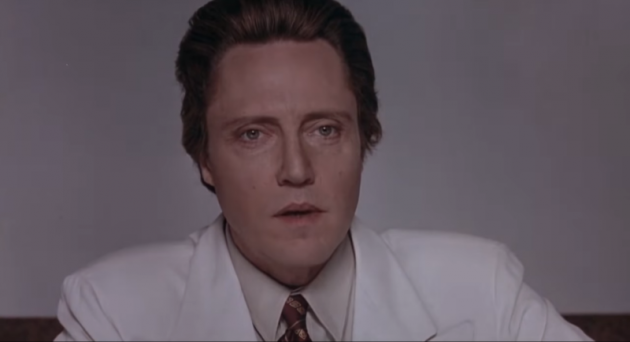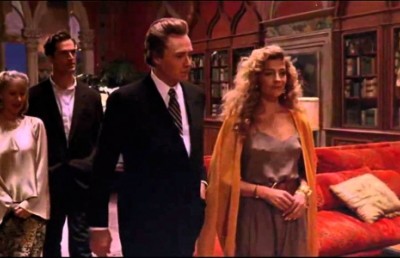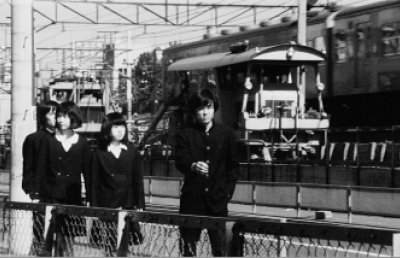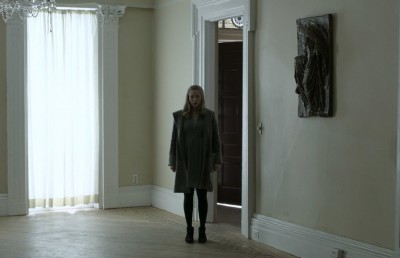FNC 2018: Levitating For Art
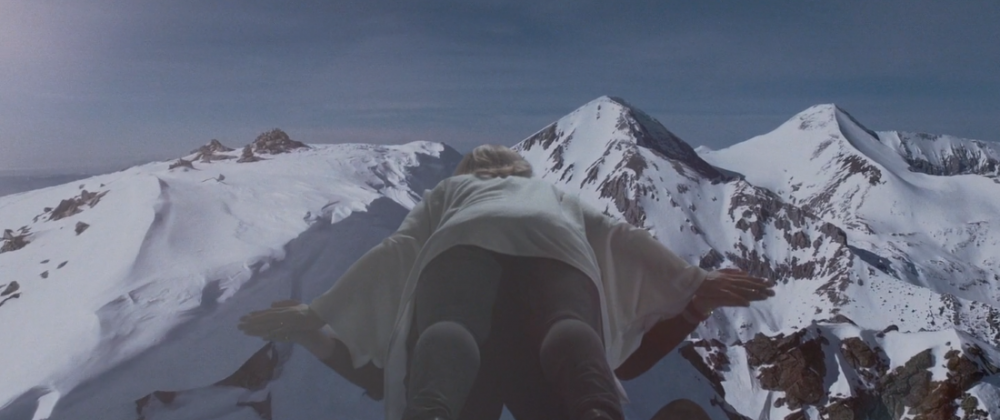
I started off my FNC festival jaunt with Firecrackers (2018, Jasmin Mozaffari, Canada), the first feature by Ontarian Jasmin Mozaffari, which stars two young teen leads, Michaela Kurimsky as Lou and Karena Evans as mixed race Chantal, who live in a poor area outside the suburbs (Lou lives in a trailer park) and struggle to cope with a rudderless life filled with bad single parenting, toxic boyfriends and shady acquaintances, like Lou’s mother’s ex-con younger boyfriend Johnny (David Kingston), who has convinced Lou’s Mom Leanne (Tamara L éclair) to become a new born Christian.

Karrena Evans and Michaela Kurimsky
The film has a quiet energy muffled through its anxious characters, reminiscent of Andrea Arnold’s works which equally feature young female protagonists in lower income social settings in search of an escape (Fish Tank, American Honey). Also on the ride is Lou’s younger brother Jesse (Callum Thompson). Director Mozaffari has a good sense of style, setting up the two young leads with an exuberant formal style of handheld camera and intimate close-ups to catch their young excitement as they plan for an escape from their social dead end by driving (with one of the boys, Kyle) to New York. The story here recalls Spring Breakers, with the same teen restlessness as they hanker to go to Florida, and steal for the privilege. Unreliable boyfriends and family pressures keep their dream at bay, until a wild outbreak from Lou who takes a baseball bat to Kyle’s (Dylan Mask) car forces her mother to repay Kyle with Lou’s savings. There is not one character, outside of perhaps Lou’s brother, who comes across as even remotely sympathetic. New Born Christian Johnny is a creepy passive aggressive, who flirts with Chantal by showing her how to shoot a b-b gun, and then gets his aggression turned on himself when his more violent-prone old buddies show up and cause some havoc, forcing Johnny to hold a gun in Chantal’s mouth for seven seconds so they can film it and post it to Youtube for “lots of hits”. The two leads are good together, playing off each other physically, with Chantal the more outwardly sexual and feminine and Lou the frumpy one, always dressed to hide her good looks, which come through in long held close-ups where the sunlight highlights her green eyes and soft features (actress Kurimsky looks like a young Pollyanna Mcintosh).
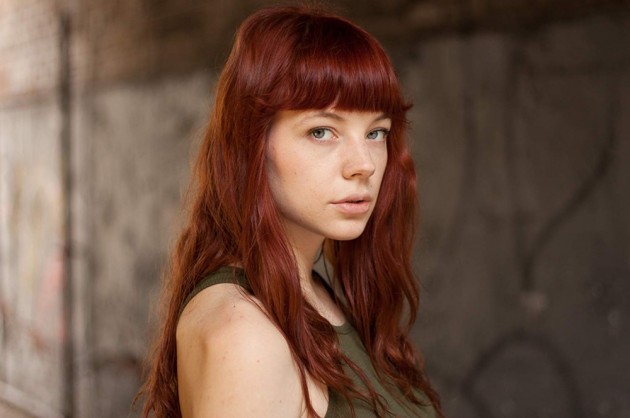

Kurmisky and McIntosh
In one of the best scenes, Johnny enters into the trailer park to apologize for placing the rifle in Chantal’s mouth. Lou slowly seduces Johnny, whose resolve is easily broken as Lou undresses and then straddles him seductively. Psychological insight is left open: did Lou sleep with Johnny for her own pleasure, or to retaliate against her mother? The film is far from being original, recalling more assured teenage dramas Fish Tank, American Honey, The Florida Project, Wolf Knife and Spring Breakers; it stops short with a certain, dare I say it “Canadian” restraint in its approach to violence and an open-ended conclusion. Lou wants to retain her independence from Johnny’s friends, who have offered to drive them out west. She gives Chantal gas money and leaves her troubled mother. But in the final scene Lou shows up with the keys to the van and drives off with Chantal, finally fulfilling their dream. But what did Chantal do to get the keys to the van? The final shots show the two driving off, but the initial euphoria of the opening is nowhere to be found. They seem more relieved than happy.
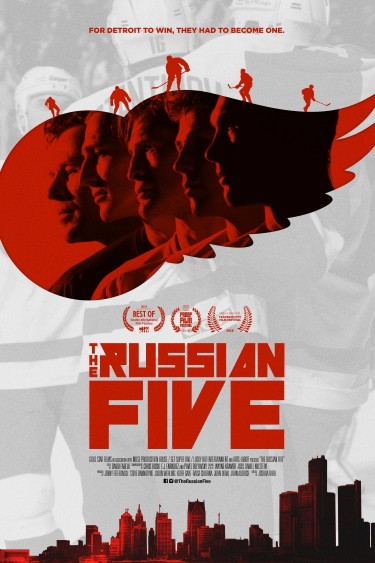
One of the more enjoyable documentaries I saw this year was The Russian Five ( Joshua Riehl, 2018), an intimate account of how the Detroit Red Wings built a Stanley Cup winning team in the 1990s on the backs of five Russian players. The story mixes interviews with the five Russians and teammates, club owners, presidents, beat writers, even fan actor Jeff Daniel. The beginning of the doc deals with the ideological and political work needed to maneuver the players to defect from still Communist Russia to the US. The first was Sergei Federov, a 4th round draft pick, followed by Vladimir Konstantinov and the third Russian they picked from the Russian hockey pool was Vyacheslav Kozlov. The final pieces of the puzzle came from trades with NHL teams, first for Viacheslav Fetisov from the Devils and then Igor Larionov from the Sharks. The film has a definitive arc that is structured on the build-up of Detroit from a bad team that had not won the cup since 1955, to the brilliant drafting of Steve Yzerman in 1983, and the five Russians; the heartbreaking loss after the record breaking 61 win season, to the eventual first cup win in the 1996-1997 season, to the tragic limousine accident on June 13, 1997 after a private party celebrating the Stanley Cup win which ended the career of Konstantinov, to their second win in 1997-1998.
Director Bertrand Mandico played at the FNC last year with his debut fantasy coming of age story, Les garçons sauvages (2017) and returned this year with the even more bizarre 37 minute ode to pop art, women, and science-fiction films, with a heavy dose of Italian aesthetics, Apocalypse After (2018, France, Bertrand Mandico). The film revolves on a surreally colored and papier maché-heavy set that recalls the low budget, resourceful visual effects of Mario Bava’s Planet of the Vampires and Fellini’s 8 ½. If you can imagine the Science Fiction film that creatively blocked director Marcello never shoots in 8 ½, or reimagined as if it was Fellini’s segment from Spirits of the Dead, with its flowery men and regal women, you’ll come close to what Mandico seems to be striving for. Elina Löwensohn, who appeared in Les garçons sauvages and also Belgium couple Hélèn Catett and Bruno Forzani’s hyper stylized Let the Corspe’s Tan, plays Joy D’Amato, an art porn director who sees her youth slipping away from her as she films beautiful young women on her Mars set , lit in glorious mist enshrouded blues, reds and greens, filled with phallic shaped stumps and gorilla like aliens who rape women with their phallic communicators. Joy D’Amato (her name an obvious nod to Italian cult porn and horror director Joe D’Amato, a pseudonym for Aristide Massaccesi, 1936-1999) seems in love with the statuesque Apocalypse (Pauline Jacquard) and tries to seduce her in between takes. The dialogue shifts from normal movie dramatics to poetic interludes, even summoning Jean Cocteau to recall the glorious myth of Orphée which seems to be channeled in this film. Death, corpses, flowing colored fluids out of orifices, phrases such as “more cruel than the Pope” crash into each other, with a nice synth score keeping it all vibrantly retro. And there is a gorilla named Gisou (Jesus you see) who speaks English to her. The only sour note is a rape scene: is it really necessary, even if it was suggestive and comically phallicized? All very odd, mannered, surreal, slightly distancing. It’s Mars envisioned as Hell, or a cinema set cluttered with female passion in a world, a film world no less, dominated not by men but by women. This one makes a perfect set up to the equally insane but more grounded, Knife + Heart, another France production.
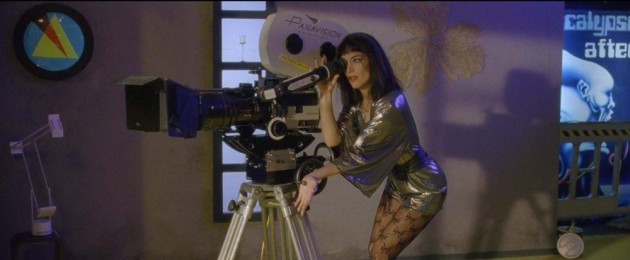
After Apocalypse
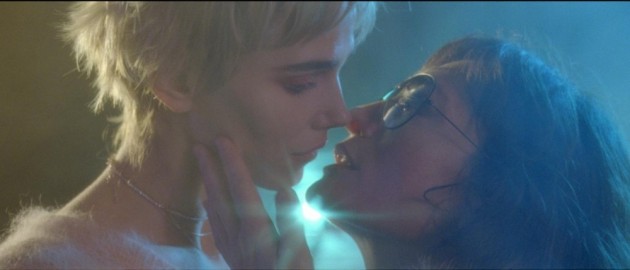
After Apocalypse
Knife + Heart (2018, Yann Gonzalez, France) is a wildly inventive nostalgia retro piece which is set in the summer of 1979 Paris in the milieu of low budget gay filmmaking. Vanessa Paradis as Anne Parèze (in a striking blonde hair which recalls Asia Argento’s blonde wig in Stendhal Syndrome) stars as a slightly unhinged producer of Jean Genet inspired porn who is reeling from a breakup with her editor-slasher lover Lois (Kate Moran). She shifts her angst, depression and anger over into her filmmaking, taking a cue from the gay killer who eventually takes out two of her cast, working with a flamboyant director Archibald (Nicolas Maury) on a film called “Homocide” (Tueur Homo). The cast being killed by someone tied to the set recalls Michele Soavi’s Stagefright, while the first murder of a gay pickup gone bad recalls the violent murders in Looking For Mr. Goodbar (knife in the back) and Cruising. Knife + Heart is one of the growing number of films bucking the digital norm by being shot on film (35mm and 16mm), a trend more common with films set in a pre-digital age that use film to closer approximate the look of the story era (BlacKkKlansman, Suspiria (2018), Christopher Robbin, Dunkirk, Godard, Mon Amour, The Post, The Phantom Thread, The Beguiled, Call Me By Your Name, Frantz, The Hostiles, The Ballad of Lefty Brown, Wonderstruck, I, Tonya, Battle of the Sexes, for example). For doubters, the fact it was shot on film was confirmed by my friend and ace cinematographer Karim Hussein. With a blend of brash colors, split screens and eccentric camera movement Knife + Heart wears its giallo influence plainly on its sleeve but flips the normally misogynist stereotypes of the giallo on its head by depicting sex in a mainly healthy and positive light, as opposed to the more troublesome human emotions surrounding frayed egos and emotions. The film opens with a homage to William Friedkin’s divisive Cruising, with a scene in a gay bathhouse that ends with a pickup and violent murder which is patterned after the opening murder in Cruising. The scene is intercut with porn footage featuring the victim, Karl (Bastein Waltier), a slight man who catches the eyes of a man in leather and a full leather facial mask. They end up in the victim’s apartment, the man hog-tied on his bed face down with the lover/killer on top of him. The killer rips off his underwear then pulls a black dildo out from his crotch. A stiletto knife thrusts out of the dildo’s head and the killer thrusts the knife into the man’s anus (off-screen). This is by far the most conventionally horror/serial killer like scene in the film, which gives way to a twisted romance and reflexive retro piece with more camp humor and fun intertextual references than straight horror. The killer’s backstory is told in blaring all-white flashbacks where we see someone caught up in a burning barn, which explains the killer’s leather facial mask which at the end we learn is hiding a burn-scarred face. The only clue at the scene of the crimes is a black plume, which works itself satirically into the plot with the killer having been raised by birds (a reference to Romulus and Remus being raised by wolves?). In the end Anne’s movie cast is at the cinema where they apprehend the killer, while one man stabs him to death. The final scenes play out as individual theatrical tableau’s, one a black and white fantasy of Anne and Lois reuniting, the other a Caligula-like play which ends by shifting between different singular colored filters.
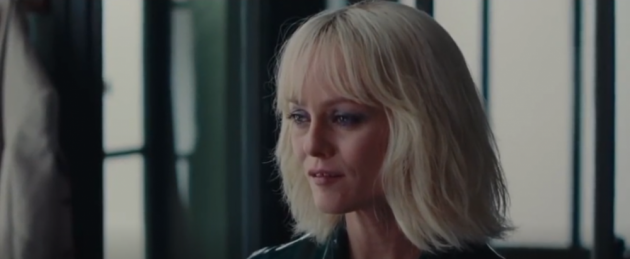
Vanesa Paradis
The latest offering from one of contemporary cinema’s arch formalists Peter Strickland, In Fabric (2018), is a treat for FNCers wanting something both unique and entertaining. Compared to his earlier works, Berberian Sound Studio (2012) and The Duke of Burgundy (2014), In Fabric is lighter in emotional resonance, though still marked by his trademark cinematic borrowings. In most cases, when a film ends with a major fire burning everything down, it signifies a last ditch effort ending when a script can’t find a better way to bring things to an end. But the difference is this is a Strickland film and the ending, coming as it does in a completely odd, fetish film, feels actually inventive, because of what happens to the customers as the store burns down (they still fight over products) and the way the sound of the fire alert warning melts to abstraction. And it is the exact way that Dario Argento’s Suspiria and Inferno end, not to mention Corman’s House of Usher. The story deals with a red dress that is possessed by the vengeful spirit of a woman, a former model of a clothing store, who died while wearing the dress. The possessed dress recalls the story in the anthology horror Asylum, the third story called the “Weird Tailor” of a father, played by Cushing, who wants a tailor to build a suit for his son with a special glowing fabric. Or the haunted mink furs of slaughtered raccoons from Argento’s second season Masters of Horror episode, Pelts (2006). Strickland is the master of fetish, himself a fetishist of 1970s Italian horror and giallo, and in this film, he sets his action in a dress store named Dentley and Soper run by women in 19th century clothes who move and behave like mannequins. The head saleslady played by Strickland regular Fatma Mohamed speaks with a heavy European accent and an English that feels as if it was translated through three languages before hitting English. She convinces a divorced mother of one, Sheila (Marianne Jean-Baptiste), hungry for male companion, to buy the red dress, using her insecurities against herself (“Make sure Adonis complements you”). The dress becomes a mischievous character, floating in air, slithering under doors and along ceilings, and sending the washing machine into a state of auto destruction that nearly kills poor Sheila. Sheila has it all to do in her life, dealing with an ungrateful son who has a live-in art model who continually offers passive-aggressive insults at Sheila, Gwen, played by Gwendoline Christie as a goth Queen Bitch who uses her son as a sex toy; a series of blind dates with proverbial losers; and an overly zealous work supervisor who knit picks after her work habits (complaining when she goes to the toilet before checking out, or blaming her for insulting the bosses wife by informally waving at her outside of work), and on top of all this, a red dress that gives her terrible rashes. Sheila dies a violent automobile death when the red dress placed in a box in the back seat of the car conspires with a mannequin to cause her to crash her car.
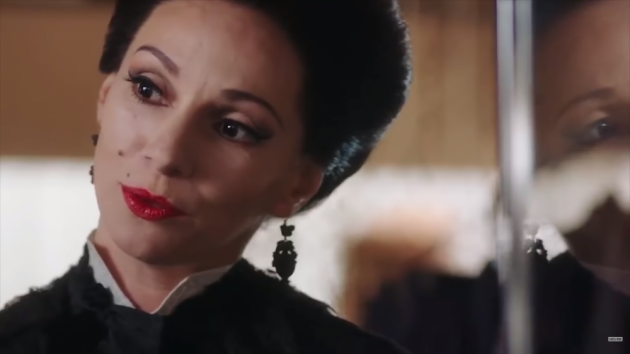
Fatma Mohamed
At this point in the story, following the Asylum anthology model, we shift to a second character, a young washer repairman out on a stag party before he marries. They force him to wear the red dress, which his fiancée will also wear, fating them both to violent deaths. The man dies, being numbed to death by the couturiere’s hypnotic ad (think Rodney Ascher’s S From Hell, his mockumentary about a 1964 Screen Gems promo that terrified a generation of children who saw it on TV, and Halloween 3: Season of the Witch). The film loses some steam with the second story, although links are made to the first in the way he is henpecked by his friends and work supervisor, and the way his technical talk about fixing the washer is loaded with sexual innuendo, which links to the scenes at the couturiere shop. Images of the Mohamed character framed behind a round window recalls Barbara Steele framed in Freda’s The Horrible Dr. Hichcock (1964).
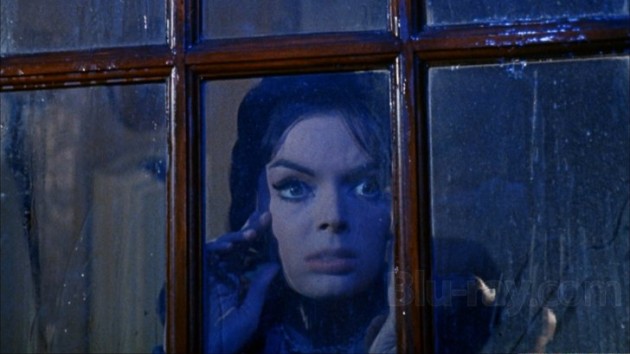
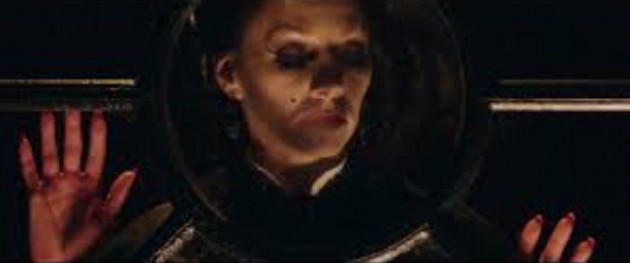
Barbara Steele and Fatma Mohamed
The credit scene (and location) recalls the credit sequence in Blood and Black Lace. And a TV ad run by the store, which is hypnotic and puts viewers in a trance, shows echoes of Halloween 3 but in its retro style is closer to Rodney Ascher’s mockumentary about a 1964 Screen Gem’s logo, S From Hell (2010), that terrified a generation of children who caught it on TV. Strickland’s Freudianism comes clearest in an hilarious scene where a ritualistic cleansing of a female mannequin becomes a combination voyeuristic peepshow, with the single male employee, a tall, gaunt man who looks like he came out of a Rollin film, masturbates outside the shop window while the sales lady cleanses the mannequin’s pubic hair, which is capped by blood flowing from the mannequin’s vagina which she dutifully rubs onto her lips, causing the man to orgasm. The scene is a checklist of psychoanalytical states (castration complex, Oedipal Complex, the mirror stage, etc.). The film is ostensibly an exercise in fetish retro style (with a great score by Cavern of Anti-Matter) but with a measure of political and social subtext around issues of class, capitalism and consumerism. Like the way the horde of customers pile onto the door waiting for them to open, much like the mindless zombies in Dawn of the Dead.
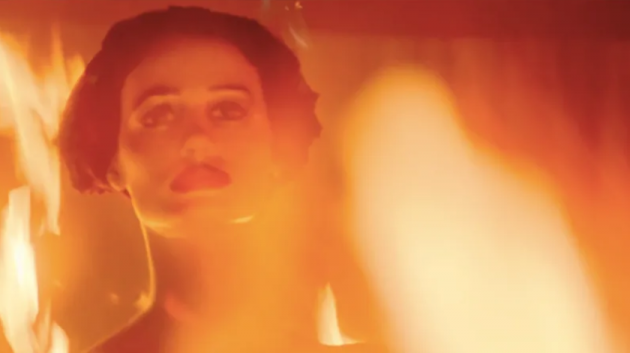
One of the highlights at this year’s FNC was surely the appearance of film critic turned screenwriter and then director Paul Schrader, who was treated to a mini retrospective, hosted a masterclass, and presented his latest film, First Reformed (2017, Paul Schrader). His appearance also coincided with the publication of a revised edition of his 1972 film theory/aesthetic book Transcendental Style in Film. Schrader seems to have flipped his own filmic ideal of transcendental film style, which argues for a style that moves closer and closer to ‘mandala’ or stasis. In this case, though he is far from the slow cinema he writes about in the new introduction to his book, he remains at least close to the more contemplative style of the transcendental masters during the most of the film, but then gives way to “abundance” three quarters in (82 minutes, with the levitation scene) and right at the end when Mary (Amanda Seyfried) unexpectedly enters Toller’s (Ethan Hawke) room, moments after he foregoes one form of suicide (suicide bomber) for another (self-internalized bleeding), and perhaps saves his life by embracing and kissing him, or shows him a view of paradise. At this point, the subtle but passionate reconciliations at the end of Pickpocket and American Gigolo give way to dizzying 360 degree, Vertigo-esque camera movements that encircle them. A film that features a contained man, a priest who was once a military man, trying to keep his life under control, writing a planned one year diary, counselling hurt people, ends up a classic Schrader male character: obsessed to the point of becoming violent. Think Light Sleeper, Hardcore, Taxi Driver, Affliction, etc. This is closer to Tarkovsky than Ozu, though there are also shades of Bresson.
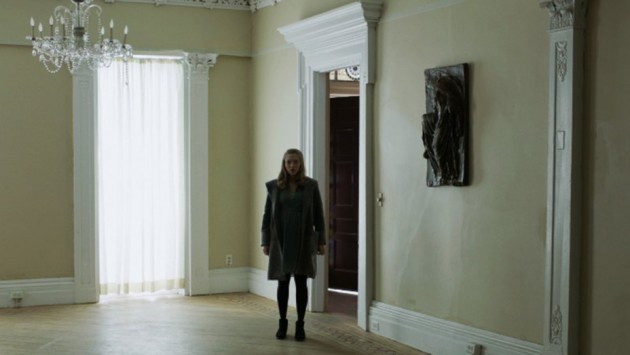
But Tarkovsky is a closer touchstone because of the central homage to the “apocalyptic” perpendicular tracking shot that tracks over humans and then despair and industrial horror (recalling the similar shot in The Sacrifice, 1986), a product of Toller’s political awakening to climate change (interestingly a few day ago, September 27, Swedish teen environmental activist Greta Thunberg spoke to a huge crowd of roughly 500,000 people in Montreal). Here too the floating/levitating body that in Tarkovsky usually signifies love, in The Sacrifice feels more ominous; here too it first expresses the repressed love set free between Mary and Rev. Toller but then Mary and Toller disappear from the image and we only see the many-sided destruction humans have made of earth (mountains of rubber tires, industrial waste, etc.). It moves from the purely human to the purely natural, but the lingering presence of humanity remains in the destruction. Pushing the political further than Tarkovsky, this is Schrader’s most political film by far, equating Christianity with the beginnings of capitalism and the freedom to exploit the land and nature for man’s benefit. It seems that man has taken this exploitation too far, is what Toller has come to realize, and now asks of both the religious and business leaders in his community: how do we forgive ourselves to God for messing up his kingdom? This is also Schrader’s best script since, well, a long time. The first extended dialogue between the doubtful Toller and the even more doubtful (over man’s ability to redo its sins against nature) Michael (Philip Ettinger) is riveting in its spiritual and political breadth. Mary finds a suicide vest fitted with bombs inside the garage, which confirms her husband Michael’s seriousness toward his activism and/or his despair. When he texts Toller to meet him at a secluded spot in the woods, Toller discovers Michael lying on the ground with his head blown off. The sight of Michael’s inert body instills a new energy in Rev Toller, who now is politicized and begins to question the Church’s lack of resistance to the election of a president who denies science. This film really shows the true colors of Schrader: he has always said he is not enamored with organized religion, but the spiritual, even though he still belongs to a church. So is the dizzying embrace at the end a sign of hope, or he dying in her arms, like the planet? Toller is like other Schrader characters, wanting to purge ugliness they see around them, like Bickle in Taxi Driver, Scott in Hardcore, Willem Defoe in Light Sleeper.
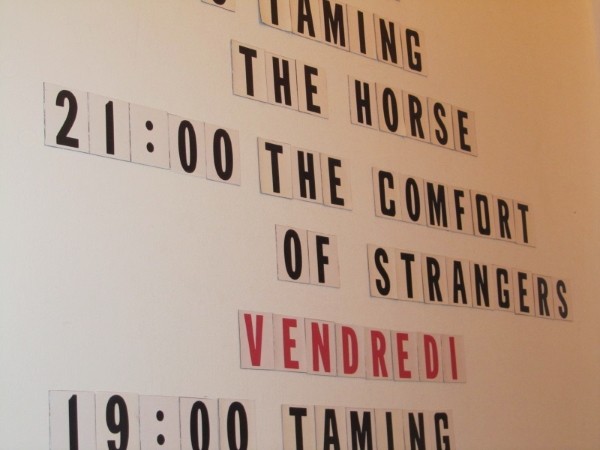
The Marquee at Cine-moderne for a ‘rare’ 16mm screening of The Comfort of Strangers, courtesy of Montreal’s Cine-Club, operated by Phil Spurrell
A 16mm print of The Comfort of Strangers (1990, Paul Schrader) played at the Cinema Moderne as part of the Paul Schrader retrospective at the 2018 FNC, with Schrader in attendance to introduce the film. The Comfort of Strangers joins a relatively short line of films shot in Venice, including Don’t Look Now, two fine gialli, Who Saw Her Die? and Whispers in the Dark, one infamously notorious giallo, Giallo a Venezia, the underappreciated sequel Nosferatu in Venice, and the Alien plus Terminator knock-off, Shocking Dark. The Comfort of Strangers shares with these others an elegance which comes partly from the beauty of the city, which Schrader makes full use of by filming in the city’s squares, picturesque narrow roads, vaporetti, and cafes. The production team behind this is quite impressive, from the composer, Angelo Badalamenti, cinematographer Dante Spinotti, producer Angelo Rizzoli, scriptwriter Harold Pinter, with a top notch cast of Rupert Everett (Colin) and Natasha Richardson (Mary), a couple who have come to Venice to try to salvage their floundering relationship, not unlike the George Saunders and Ingrid Bergman in Voyage to Italy. And their wolf in sheep’s clothing nemesis Robert, played with subtle menace by Christopher Walken, and his “Canadian” wife Caroline (Helen Mirren). As is often the case with films set in Venice, the beauty harbors something ugly and sinister. In this case Venice becomes a playground of contesting masculinities, a theme common to Schrader’s other films. The Comfort of Strangers begins in elegance, with a long take Steadicam credit sequence shot of about three minutes that introduces us to a handsome apartment, showing us the gorgeously lit rooms with ornate furniture, art, and classical paintings. As it nears the final room (after a cut) we hear the (Italian-ish) accented voice-over of Christopher Walken, reciting a story which becomes apocryphal by hinting at the size of his ego:
“My father was a very big man. All his life he wore a black mustache. When it turned grey he used a little brush to keep it black. Such as ladies use for their eyes. Mascara. Everyone was afraid of him, my mother , my four sisters. At the dining table, you could not speak until you were spoken to first by my father. But he loved me. I was his favorite.”
This line, repeated several times by an Italianesque sounding Walken (though to be fair, his accent wavers all over the place and a convincing Italian he does not make) is clever in its use of language and translation. In English ‘very big man’ suggests a physically big person, but in Italian, “uno grande uomo” means a great man, someone large in social or cultural standing. Which reflects Robert’s own inflated sense of self-worth, and his lament of the days of his father and grandfather, when men were men. Mirren’s Caroline, who in small talk with Mary, can’t fathom why an all-female theatre troupe would exist, seems like a woman with sexual and gender mores from the 1950s, who has been living comfortably under the oppressive thumb of Robert, who has little appreciation for women as anything but objects to own.
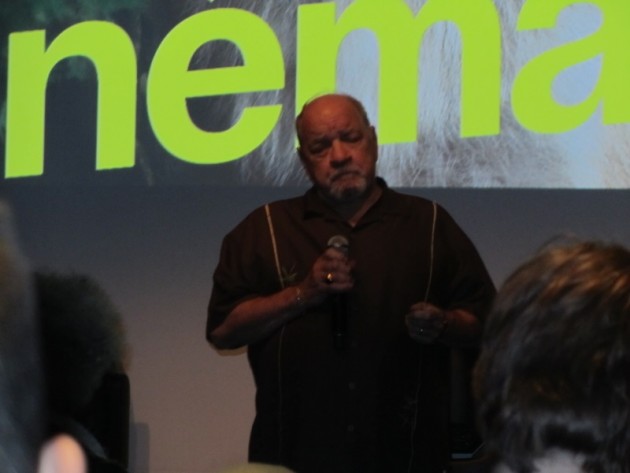
Paul Schrader on Stage
He repeats this story of his “father” in the wonderful trattoria scene, where he holds court for long stretches of time telling Colin and Mary about his family and personal anecdotes, while Colin and Mary remain silent, passive, reduced to smiles, gestures of acknowledgement and nothing else. It is a fascinating scene because of how Robert is able to infuse his power over them in a “friendly” way. And the way the camera tracks away from their table to capture the other customers before returning back to them. When Robert invites them to spend the night at his apartment, they wake up in the morning with all of their clothes gone, making them feel vulnerable. To further this subtle form of invasive behavior, when Mary wakes up and meets Caroline in the living room Caroline admits that she entered their bedroom while they were asleep and spied on them. This sets up an escalating level of violence, which begins with voyeurism, prying into their personal matters, psychological warfare, to physical violence.
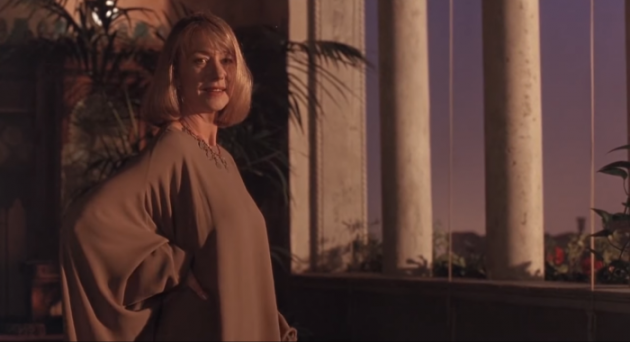
Helen Mirren
First they discover Robert is taking voyeuristic photos of Colin. Then Robert’s promise of finding them a restaurant is a lie when the café has no food (and another fact that goes unstated, he owns the restaurant). And then, for the apparent reason of ridiculing Robert’s reactionary attachment to the “good old days”, Robert punches Colin in the stomach. As Colin catches his breath, holding his pained stomach, Robert throws him an approving wink. “Society has to get rid of its perverts,” is Robert’s dinner time banter. And when he makes fun of homosexuals, “poofs”, it opens up a possible attraction between Robert and Colin (while possibly alluding to Rupert Everett’s offscreen homosexuality). The couple does not heed the warnings of these escalating attacks, for a simple reason: something about this “dangerous liaison” with Robert and Caroline has increased their sexual appetite for each other. And while Colin grows more attached to Mary, Mary wants to advance their relationship gradually, a change from her previous feelings.
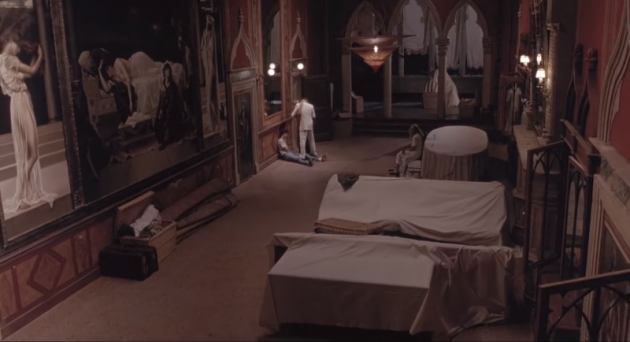
In the creepy finale, Colin and Mary refuse their chance to leave Venice by agreeing to see Robert and Caroline one last time. The two couples split up, Caroline revealing her masochistic relationship with Robert to Mary at their now vacant apartment, which they have decided to sell, while Robert and Colin visit Robert’s bar, which he is also in the processing of selling. Meanwhile the drug placed by Caroline in Mary’s tea begins to take hold. Caroline reveals that, like them, their meeting has intensified their sexual relations. As the men arrive at the apartment, Colin is distraught to find Mary in a sickened, confused state. His attempts to help Mary are stifled by Robert and Caroline, who force him up against the wall, implying that they desire him sexually. Instead, Robert takes out a knife and slits Colin’s throat. The throat slitting moment is handled in a dreamy, languorous style which recalls the opening, the camera now craning back from the three characters in slow motion, retreating up and away to film Robert and Caroline kissing over Colin’s collapsed corpse, with Mary sitting slumped over at the edge of the bed. Badalameti’s romantic swirling orchestral score giving the moment an ironic sense of grandeur. This death by throat slitting of a major character is maybe an homage, or a subconscious lifting, of the end of Don’t Look Now. Whereas the Donald Sutherland character in Don’t Look Now could not see his own powers of prophecy, the couple here are also non-receptive to the clues given to them or warnings of the imminent danger in their future.
A coda in the police station where detectives ask Mary questions about their relations with Robert and Caroline adds an unnecessary sense of pat closure, until the final shot, where an officer questions Robert about the damning facts of the case, and the scene cuts to a full frontal close-up of Robert as he begins to talk, “My father was a very big man……”
